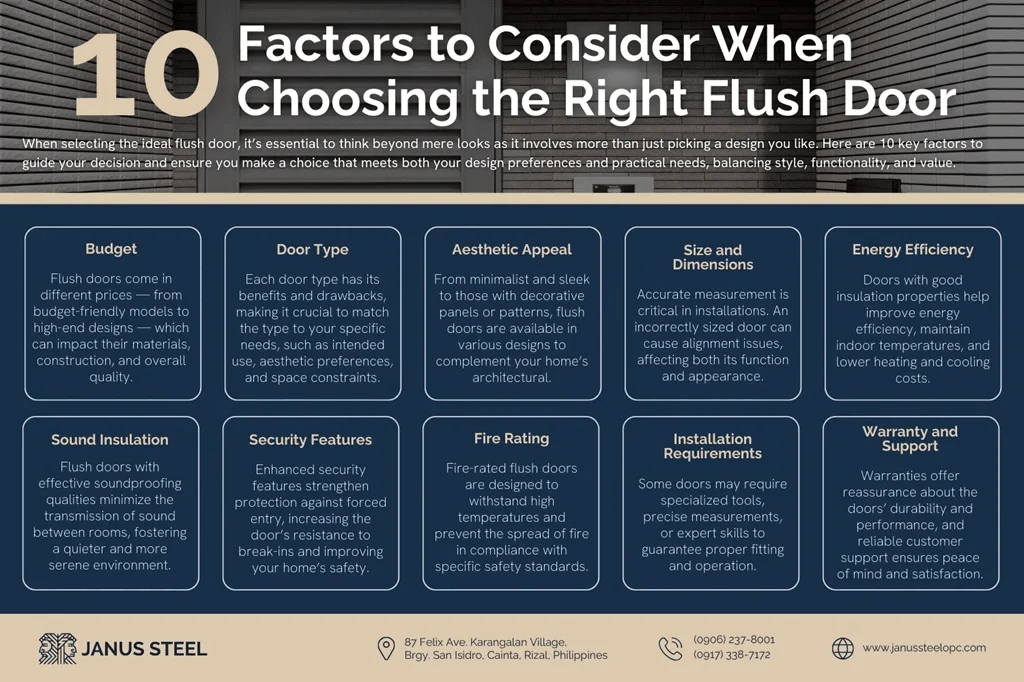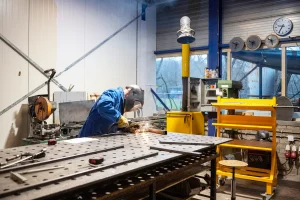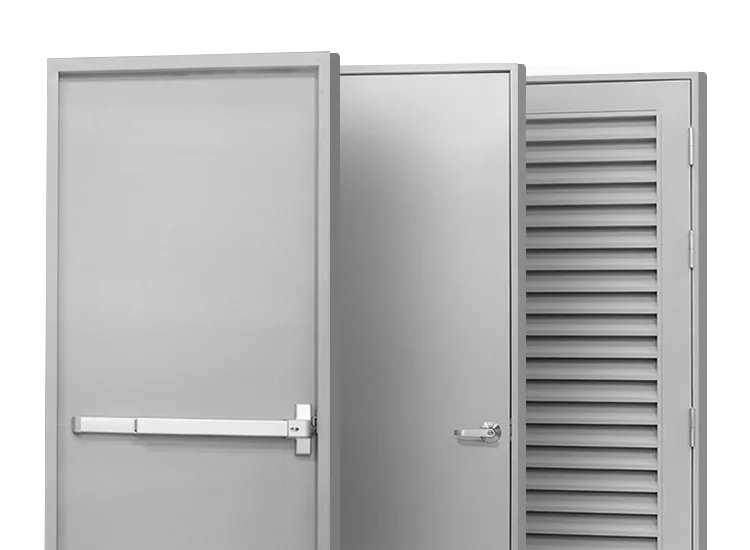When people think of building their dream house, they often picture a well-designed house replete with fantastic furniture and an atmosphere of comfort and ease. They imagine everything down to the very minute details, but there are some people who tend to overlook one critical feature: doors.
What are flush doors? Are they right for your space? In this blog, read on to find out more about flush doors, the different types, and how they compare to other doors.
What are Flush Doors?
A flush door is a type of door that is made of a singular board of wood veneer, which is then made to fit exactly with the doorframe, doing away with the normal recessed space that we find in traditional doors, that sit slightly inside the frame.
Flush doors are cost-effective and minimalistic by design, which can emphasize a modern and seamless environment. Moreover, they can be used almost everywhere in a house, whether for interior doors, or as a main entrance door.
Flush Doors vs Panel Doors
How do flush doors differ from panel doors? Here’s a simple breakdown: Panel doors are constructed in an entirely different manner compared to flush doors. They are made by connecting multiple wood panels in the center of the door, also called stiles, to rails, or horizontal panels of wood that are found on the upper and lower sections of the door, and are held together by a few more rails in the center.
Furthermore, panel doors cost a good deal more compared to flush doors, and can have more varying designs owing to its method of construction.
Different Types of Flush Doors
Solid Core Flush Door
Also known as a laminated door, this type of flush door is constructed using hard timber, and is typically a door with a block of wood in the middle. It has been made to be more secure compared to hollow core flush doors, and are a very good choice for doors on the exterior of the structure.
Cellular Core Flush Door
This door is made by combining multiple planks of wood together, placed on flattened plywood sheets that give it a cellular or grid-like design. They are not as durable compared to solid core doors but are a very good option for interior use such as bathroom, closet, or even bedroom doors.
Hollow Core Flush Door
Compared to the other two types, this door has a hollow center consisting of a honeycomb structure held together between thin plywood planks. This is the most economical choice of the three types of flush doors. They lack the durability of solid core and cellular core doors and so should be used in areas that receive less traffic compared to other areas of the structure.
Veneered Flush Door
Veneered flush doors are covered with a thin slice of natural wood, giving them the appearance of solid wood doors. Consequently, they exude a high-end look while being more affordable and environmentally friendly.
PVC Flush Door
Made from polyvinyl chloride (PVC), these doors boast of their ability to resist moisture and termites, making them suitable for bathrooms and other wet areas. They’re also lightweight and easy to install.
Related Article: Wood Door vs Steel Door: Guide for Choosing the Right Entry Solution for Your Home

Pros and Cons of Flush Doors as Your Design Choice
Flush doors are a popular design choice in many modern interiors due to their sleek, minimalist appearance. They can complement various design styles and are often favored for their affordability and ease of installation.
However, like any design decision, choosing flush doors comes with its own set of advantages and disadvantages. Below, we’ll explore the key pros and cons to help you determine if flush doors are the right fit for your space.
Advantages
1. Minimalistic yet Aesthetic Design
Flush doors are minimalistic by design but still give off an attractive appearance, as the door can still be embellished by adding additional textures.
2. Cleaning is Easier
Owing to its design, it is now much easier to clean as there are less grooves to adjust to. The cleaning method is simpler as a simple downward wiping motion will take care of the accumulated dust.
3. Prices are More Economical
As flush doors are easier to make compared to the traditional panel doors, they generally cost less to produce, and are readily and easily available at almost any construction supply shop.
4. More Resistant to Wear and Tear
Because of the wood veneer on the exterior of the door, it becomes more resistant to warping or exposure to elements. Additionally, if a laminated skin is used, staining would be far less likely to happen.
5. Easy Installation
Flush doors are very easy to install, especially the more lightweight types such as the cellular core or hollow core flush door. However, care must be taken if installing the solid core type of door, since it is heavier compared to the other two and might require more than one person.

Disadvantages
1. Difficulty in Repairing
Flush doors are rather difficult to repair, especially if the door is a hollow core or cellular type. Since the interior is hollowed out, damage to the exterior portions of the door may cause it to cave in. In such cases, total replacement of the door is required. A solid core flush door may be easier to repair, but in most cases, replacement is mandatory all the same.
2. Not Soundproof
Doors such as the hollow core and cellular core flush doors have thin or empty interiors. Because of this, sound travels easier through them. This is a potential downside for people who highly value privacy, so it is best to think carefully about where to place them. In this scenario, a solid core flush door or panel door is more capable of being soundproof.
3. Not a Very Good Insulator
Because of the cellular or hollow core door’s structures, energy transfer may become inefficient and cannot keep temperatures as high or as low as you want them to be. For insulative doors, a solid core flush door or panel door may do a better job.
4. Less Durable Compared to Panel Doors
Compared to panel doors, flush doors are more durable due to the combination of wood panels that make up a single door. Using hollow core doors as a main entryway to a house will expose it to various sources of wear and tear that will cause the door to deteriorate at a faster rate.
5. Factory-Made
Since flush doors are factory made, extremely accurate measurements must be given to the supplier beforehand as any possible alterations will be difficult to administer and might end up in a replacement being required.
Considerations When Choosing the Right Flush Door
Budget
When thinking of ideas for your property’s makeover, budget constraints will always be there, so it is best to allocate a comfortable amount to doors as they can make or break any environment.
Door Type
Always make sure to select exactly which type of door will be used according to the environment that the door will be exposed to. Use hollowed doors for areas that require less soundproofing, and use solid core doors for areas that can be affected by heavy traffic and natural elements.
Aesthetic Appeal
Finally, choose a door that complements the overall ambiance that you want your dream house to have, as there are a variety of styles to choose from.
To better assist you, feel free to download the infographic below, which features more detailed considerations.

Feel free to download a copy of the infographic above.
Upgrade your Property with Janus Steel’s Flush Doors
There are many benefits to having wood doors, but alongside them come some things that people should be cautious about. They run the risk of being damaged by pests, fires, and by external and internal moisture. These are but a few of the many problems that can be mitigated by using flush doors from Janus Steel.
We offer durable flush doors that can be the perfect fit for your dream home. If your goal is a modernized aesthetic combined with top-of-the-line security, our full flush steel doors can do all that and more — with unmatched quality and functionality.
Ready to upgrade your property today? Explore our collection of doors today and find the perfect match for you. Contact us now to get started!





